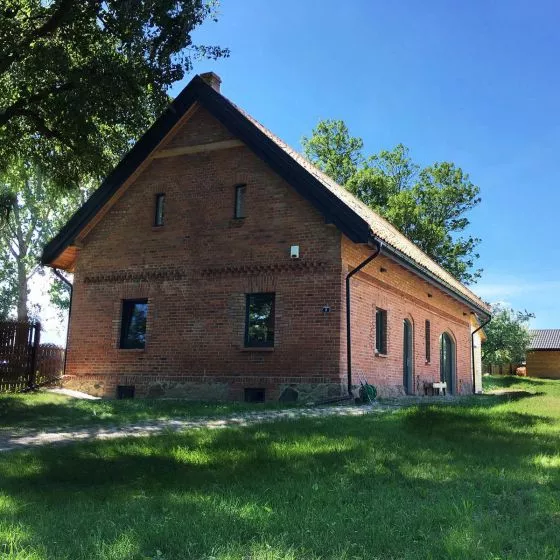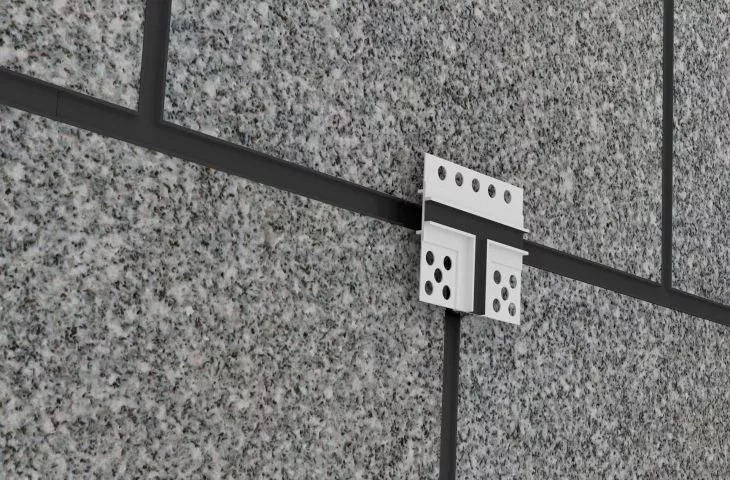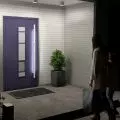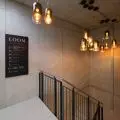Structural plasters and elements of the Bella Plast 11 system - "T" fasteners and profiled rustication strips
Decorative/mosaic structural plasters have been very popular for years. They are characterized by high resistance to atmospheric conditions and are easy to care and clean. They are commonly used as a finishing touch on plinths around buildings and wherever a damage-resistant yet decorative plaster surface is expected. In order to divide the surface of the facade into rectangles imitating natural stone slabs - the necessary materials are PVC profiles for rustication and "T" shaped connectors.
Imitation stone facade panels - an economical and visually attractive solution
The variety of textures, colors or granulations offered by manufacturers available on the market - makes decorative/mosaic plaster used as an excellent imitation of stone facades, especially sandstone and granite.
Traditional stone facade - heavy-dry method
Traditional stoneslab facade made by the so-called heavy-dry method where, with the help of a fastening system (metal anchors, guides, etc.), natural stone slabs are placed on a facade insulated with mineral wool - is, first of all, very expensive and requires special technical procedures to hold many tens of tons of stone slabs and to ensure special safety both during installation and, of course, during use.
Structural plaster imitating stone - light-wet method
An alternative is unquestionably the use of the light-wet method, where the wet element is precisely a structural decorative plaster version of granite, sandstone or other stone. The effect that can be obtained thanks to this is, first of all, a radical reduction in costs, acceleration of installation work, a wide choice of structure of many different stones, colors, which without any compromise - as in the case of natural stone slabs - can be adapted to the appearance of the entire building. Modern decorative plasters resemble natural stone so much that distinguishing them requires an assessment from a very close distance and without physically touching the surface of the plaster with the hand, not everyone is able to distinguish between plaster and stone.
In addition, the use of decorative plaster because of its technology - eliminates completely the losses associated with cracks, fractures, cracks in the stone slabs formed during transport to the construction site, storage on site and, of course, during installation. It is estimated that these losses account for about 30% of purchased stone slabs, half of which are losses resulting from cutting the slabs to size. On the other hand, repairing damage to decorative plaster already in use - because there is simply no question of other losses - is cheap, fast and without the need to order a new stone slab, where the chance of getting the same shade of stone is very small.
BP11 MINI MAC TC - facades imitating sandstone and granite
© Bella Plast
"Stone" slabs made with structural decorative plaster/mosaic technology
Profiles for rustication and connectors of "T" type facade panels - surface division
The rustication profiles together with "T" shaped connectors are designed to perform the typical joint (distance) that occurs when installing natural stone slabs.
In order to divide the surface of the facade into rectangles imitating natural stone slabs - the necessary materials are PVC profiles for rustication and "T " shaped connectors - used to connect PVC strips at right angles in a "T" shaped pattern. In the case of this solution, use PVC rustication strips named BP11 H1, BP11 H1 S i.e. hollow rustication strip with internal groove dimensions of 10mm/10mm along with a dedicated "T" shaped connector namednamed BP11 H1 TC or use PVC rustication strips BP11 MINI S with groove dimensions of 7mm (width) and 3mm (depth) along with a dedicated "T" connector for it named BP11 MINI MAX TC.
"T" connector and rustication strip
© Bella Plast
The use of "T" connectors allows you to achieve the effect of laying imitation stone slabs on a "brick", i.e. shifted against each other in phase.
Finishing of rustication strips and "T" connectors
The rustication stripsand connectors "T" should be painted with facade paints (silicone, acrylic or silkate) in color; preferably dark gray or dark brown. This will ensure a far-reaching resemblance to the appearance of the spacer inherent in natural stone slabs.
For more information, visit the company's {tag:Manufacturer} page on the A&B portal.




































